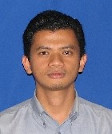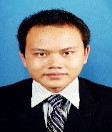Mix Generations with Self-Synchronization During Unbalanced Conditions in Microgrid
By Shamsul Aizam Zulkifli and Ronald Jackson
In recent years, renewable energy sources (RES) are becoming more interesting research area due to their penetration into microgrid systems. It is also due to the decarbonization policy that has been set by the United Nations in order to reduce global warming, which has become a turning point for RES in generating more clean energy in the future. The integration of small generation systems of RES, such as solar photovoltaic panels, fuel cells and energy storage devices into low-voltage distribution networks has now led to congestion in existing electrical power systems.
A cluster of distributed generation (DG) is associated with the power converter, loads and local controller forming an independent microgrid network. A Microgrid is defined as a system that has at least one DG or energy storage device associated with loads connected at the common busbar network. Several DGs with different power ratings and sources are called a Mix Generation system and has become one of the future trends in power generation. The Mix Generation is wherein several renewable generations are connected to the point of common coupling (PCC) in order to create a complex system called Microgrids. As known, Microgrid is the future of the electrical network due to their location being near to the loads, easy-to-control power flows and most importantly, the power rating at a Microgrid can be expanded continuously without disturbing other power generations. However, different types of renewable energy cannot be integrated directly if, each DG has different rated powers, different line impedance values and different time of synchronization. These differences should be solved by applying an advanced control system which use those parameters to be the input parameters for the controller response Moreover, a Microgrid can operate in two different modes of operation. In the interconnected mode, it is connected to the main upstream grid, wherein power comes from the DG or the main grid and must be in autonomous operation. In a balanced grid-connected mode, each DG in the Microgrid does not have to regulate the voltage and frequency. However, during abnormal grid conditions, such as in the event of unbalanced faults, frequency and phase variations, presence of harmonics, etc., it is critical for grid-side converters to remain in operation.
Therefore, a synchronization mechanism that will maintain the voltage, frequency and power flows between grid-converters should be developed at the PCC. At the moment, synchronization is controlled by the highest rated power among the DG. The highest rated power will dominate the system, and this will make an uncontrolled system vulnerable to unbalanced conditions, which can cause a total shutdown of the Microgrid. In the meantime, grid variables such as voltage, phase angle and frequency should be continuously monitored to guarantee correct operation and synchronization of the power converters connected to the power grid. There are numerous synchronization techniques that have been presented over the years to address issues such as unbalanced conditions and frequency variation. Synchronization can be defined as the minimization of the variances in voltage, phase angle and frequency between the RES generator output and the grid supply. Such synchronization must be achieved before connecting the RES to the power grid. It allows the grid and the synchronized power converter to work together.
The most commonly adopted synchronization unit is the Phase-Locked Loop (PLL) controller due to its simplicity, effectiveness and robustness in various grid conditions. However, the PLL’s performance is degraded due to the computational burden and the design, when a DG unit integrated into weak grids. This scenario is caused by the presence of voltage imbalance and harmonic distortion as well as slow dynamic performance. Recently, self-synchronization known as non-PLL has become an interesting research scope to be explored in order to overcome the PLL’s downsides. Therefore, this self-synchronization should also include the specific time for responses in an unbalanced system at the load or at the generation. In order to achieve this target, instead of using the PLL technique, a virtual PLL (v-PLL) is operated when needed. The v-PLL is being investigated recently by the researchers. This is because, due to more DGs have been integrated into the existing electrical network. A DG is very sensitive to power deviation after it loses the synchronization from the grid. It would create an unbalanced power sharing, or even worst is the following of the circulating current inside the DGs. Thus, with v-PLL concept, it can offer more adequate and straightforward phase angle, voltage and frequency detection to provide seamless and self-operate synchronization mechanism without a dedicated synchronization unit. The idea for v-PLL has been carried out recently, where they implementing, the AC generator equations in the control strategy which is called a Synchrocoventer. Therefore, the improved v-PLL suggested here, is to extend this work by adding a mechanical inertia torque and swing functions which contribute to the tracking of the frequency deviations during unbalanced system. By means all the extraction and tracking of the frequency variables can be done in both balanced and unbalanced conditions without PLL components which is phase angle detector and voltage oscillator. At the end, it provides accurate synchronization, reduces computational burden, and immunes to phase angle and frequency shifting, harmonics, and parametric uncertainty.
At the same time, v-PLL will act as self-decentralized controller for DG controller in order to behave as autonomous Microgrids. The meaning of autonomous Microgrid is when each DG can self-recognize the system frequency and voltage, self-energy transfer and self-isolate when the grid becomes unstable. All of these can be achieved by applying a new improved v-PLL with robust control strategy that uses frequency, voltage and power sharing parameters as the targets and references control with embedded with the v-PLL into the DG control. The v-PLL can be a part in the DG control system for the PLL behavior especially the frequency tracking mechanism which has the ability with the frequency prediction algorithm. This control structure is also needed to improve the modulation index and reducing the power losses among the switches. These characteristics are the main parameters for the autonomous Microgrid system.
As a result, when v-PLL technique is applied in every DGs, the unbalanced system frequency can also be solved instantaneously within inside the controller itself. It also could limit the shutdown time on the electrical grid system during unbalanced system before the Microgrid operates in islanded mode operation if the unbalanced condition remains longer within the specific time.
This article edited by Mehmet Cintugulu
For a downloadable copy of June 2020 eNewsletter which includes this article, please visit the IEEE Smart Grid Resource Center.


To have the Bulletin delivered monthly to your inbox, join the IEEE Smart Grid Community.
Past Issues
To view archived articles, and issues, which deliver rich insight into the forces shaping the future of the smart grid. Older Bulletins (formerly eNewsletter) can be found here. To download full issues, visit the publications section of the IEEE Smart Grid Resource Center.




